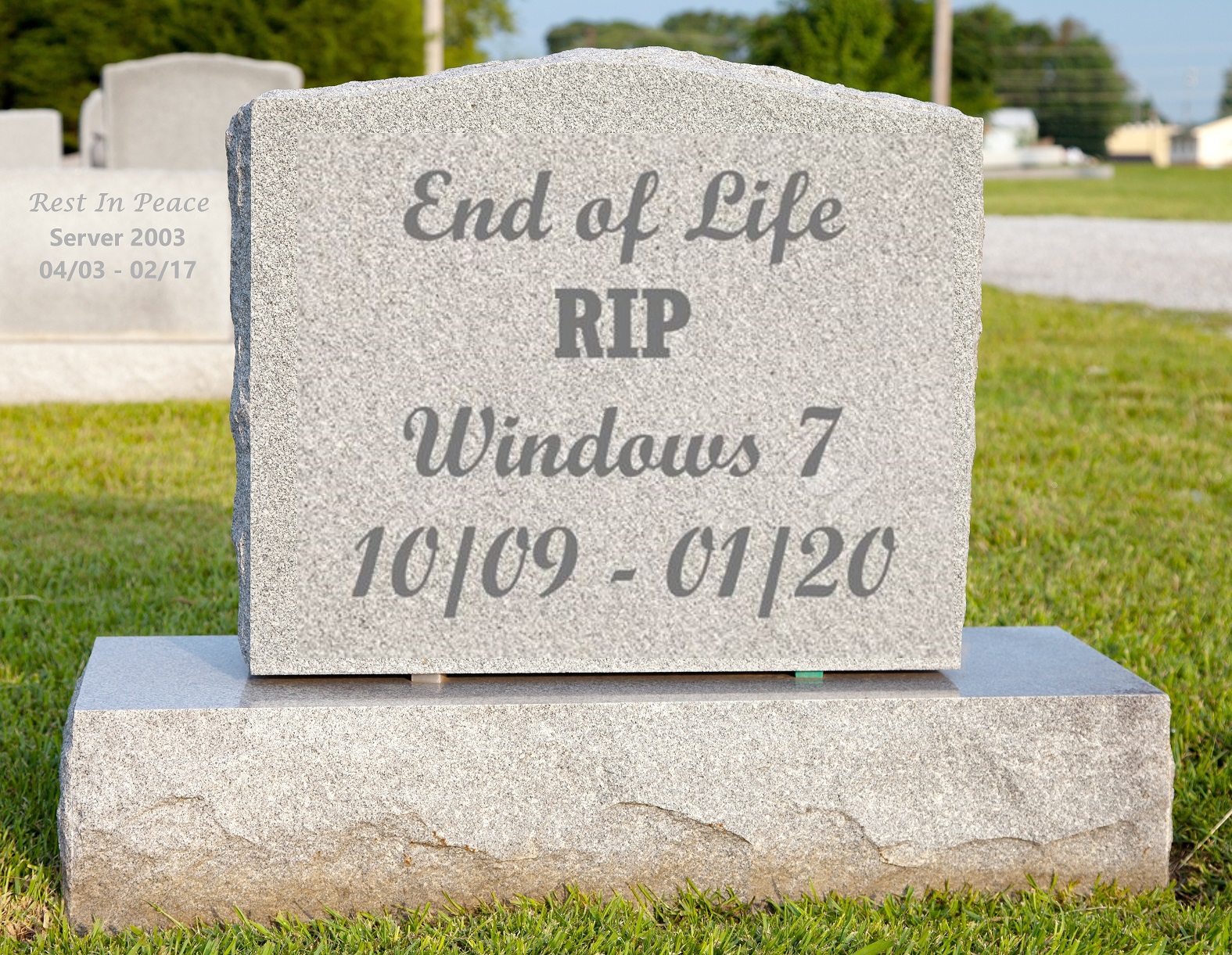In a session at the Orlando conference last year, Microsoft wanted to ensure that customers are on track to replace Windows 7 by January 14, 2020. Now is the time to inventory your infrastructure to determine what workstations will need updated/replaced as you have about 10 months to begin the implementation of your plan.
Every Windows product has a lifecycle. The lifecycle begins when a product is released and ends when it’s no longer supported. When Windows 7 reaches end of life status, Microsoft will discontinue all support of the product.
This means that Windows will no longer receive security updates for vulnerabilities that are discovered after that date. These updates are critical to keeping your data secure.
At the time this was written, the cost to upgrade Windows Home to Windows 10 is $99.99. The cost to upgrade Windows 7 Pro to Windows 10 is $199.99.
There are articles on how to avoid paying for the upgrade, but I have never tried that. There are websites that offer Windows 10 at a discounted price, but those should be avoided because many times the associated license key is invalid.

A point to consider is that an upgrade will cost you over $100, and you will still have a workstation that is probably more than a few years old. Meanwhile, you can get a new computer with Windows 10 that possesses a 1TB and 8GB of memory for under $300.
If you are looking for a new Windows 10 workstation guideline, I would suggest trying to get at least 12 – 16GB of memory to ensure that it is built to stay current for at least a few years. Then look at your current hardware requirements, and triple them. If you can’t afford the additional hard drive requirements, consider a cloud storage solution.
If/when you buy a new computer, I always suggest considering the three-year support plan. Unless you don’t mind buying a new computer again in 14 months, Murphy’s law dictates that it is best to not take a chance of a catastrophic failure. If $300 hurts now, it will really sting in 14 months if the motherboard goes out of you.
The important thing is that you prepare your upgrade path now, backup your data, then execute your plan. Don’t forget the 3-2-1- Rule!
Making your plan for upgrades/replacements now will alleviate last minute pressure and allow for appropriate funding for any required hardware.
We at Advanced Systems Solutions have helped many organizations map out an upgrade path for their infrastructure. If you’re looking for a support company to help keep you up to date, with unmatched customer service, please contact us. We love to help!
Like our Facebook page by clicking on the icon at the top right of this page to stay up to date with current alerts and information!
Disclaimer: The above information is not intended as technical advice. Additional facts or future developments may affect subjects contained herein. Seek the advice of an IT Professional before acting or relying on any information in this communiqué.




